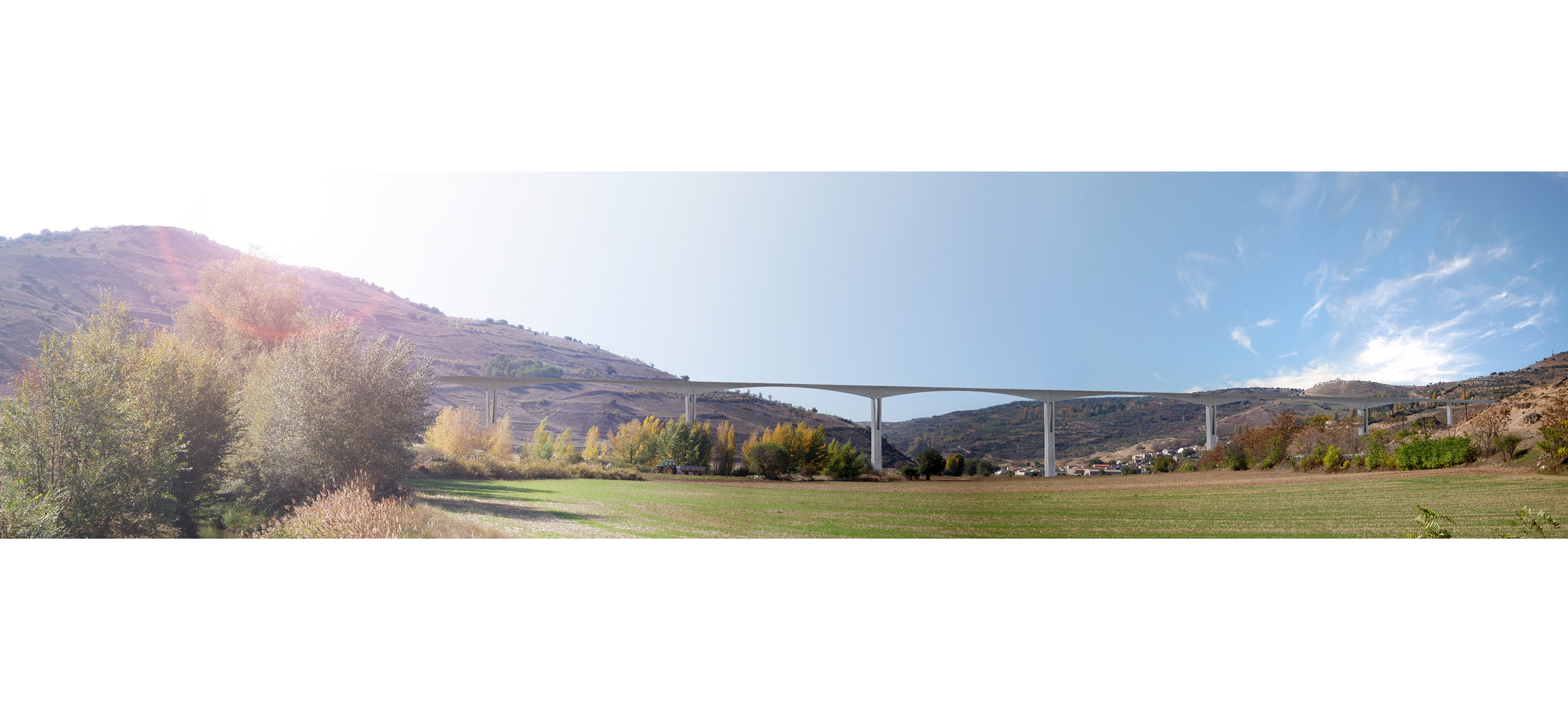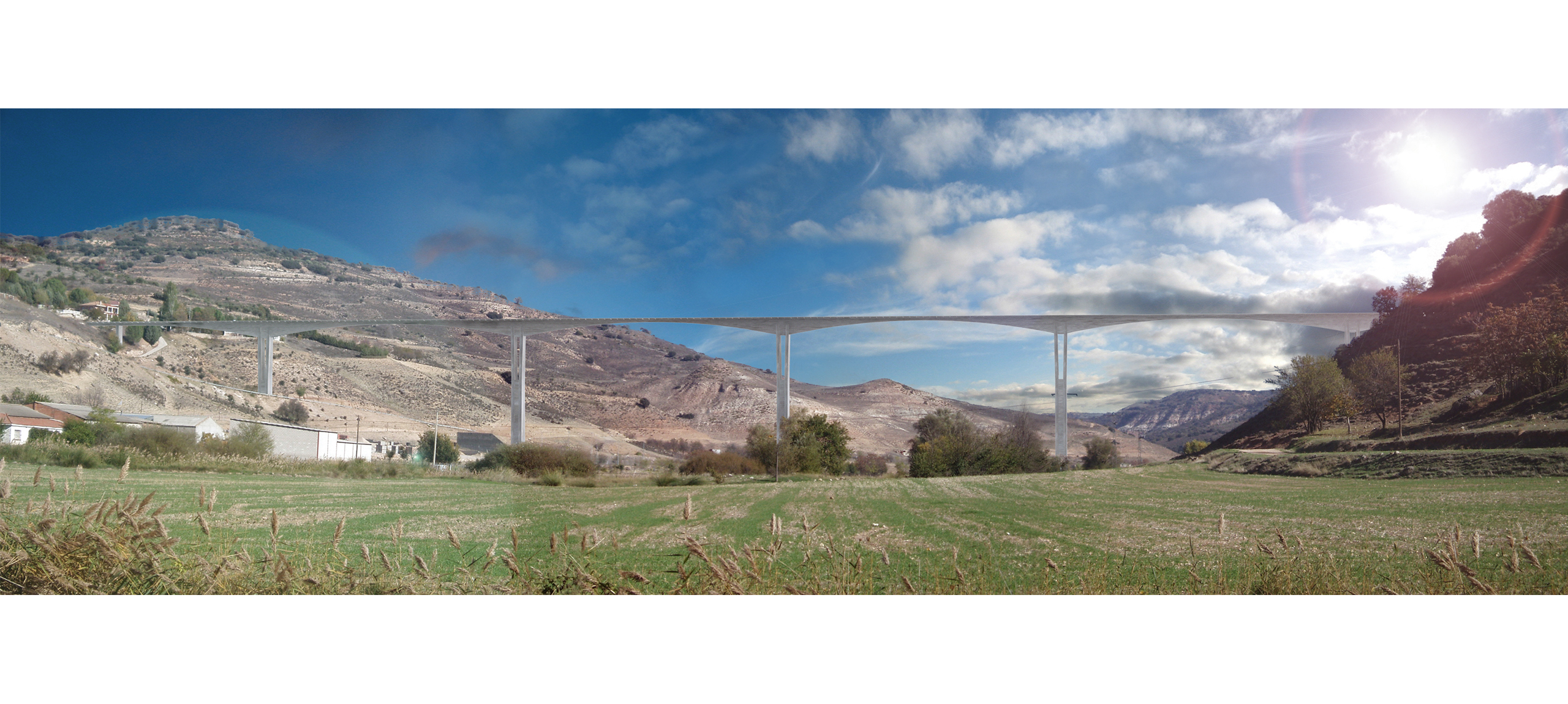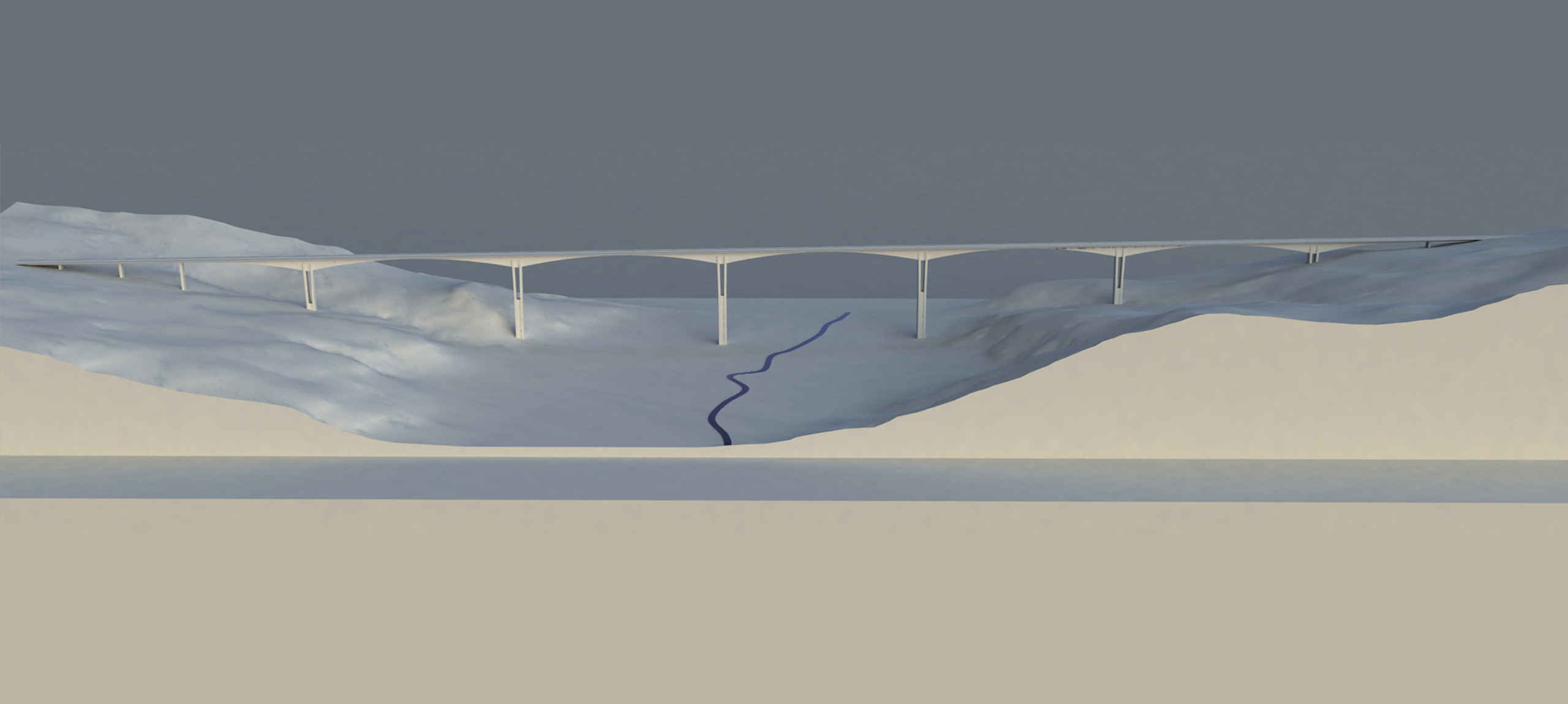
| Bridge over the Tajuña River | |
| Autovía De La Alcarria (A28), Guadalajara, España | |
| Structural typology | Road & Highway Bridges |
| Date | December, 2009 |
| Scope | Detailed design |
The structure is composed of 14 spans measuring 40.0m + 3 x 70.0m + 150.0m + 5 x 250.0m + 150.0m + 2 x 70.0m + 40.0m, reaching a total length of 1980.0m. The bridge is 24.0m wide so allowing the occupation of a dual carriageway.
The structural type employed is a continuous hyperstatic post-stressed box girder constructed using the continuous cantilever method combined with MSS (movable scaffold system).This constituted a record in Spain for this construction method.
The depth of the deck is a constant 4.0m in the 40.0m and 70.0m spans and tapered in the 150.0m and 250.0m spans where it runs between 16.5m at the piers to 4.0m at the centre of the span length, thus offering a depth/span ratio of 1/15.2 and 1/62.5 respectively.
The width of the box girder is a constant 7.5m so giving cantilever lengths of 8.25m making it necessary to have transversal tapered concrete ribs placed every 5.0m. The concrete employed has been light or high-resistant depending on the different phases of the construction process.
The bridge crosses the valley over the River Tajuña at a height of 140.0m at its centre, so needing very tall slender piers.
The structural type employed is a continuous hyperstatic post-stressed box girder constructed using the continuous cantilever method combined with MSS (movable scaffold system).This constituted a record in Spain for this construction method.
The depth of the deck is a constant 4.0m in the 40.0m and 70.0m spans and tapered in the 150.0m and 250.0m spans where it runs between 16.5m at the piers to 4.0m at the centre of the span length, thus offering a depth/span ratio of 1/15.2 and 1/62.5 respectively.
The width of the box girder is a constant 7.5m so giving cantilever lengths of 8.25m making it necessary to have transversal tapered concrete ribs placed every 5.0m. The concrete employed has been light or high-resistant depending on the different phases of the construction process.
The bridge crosses the valley over the River Tajuña at a height of 140.0m at its centre, so needing very tall slender piers.




